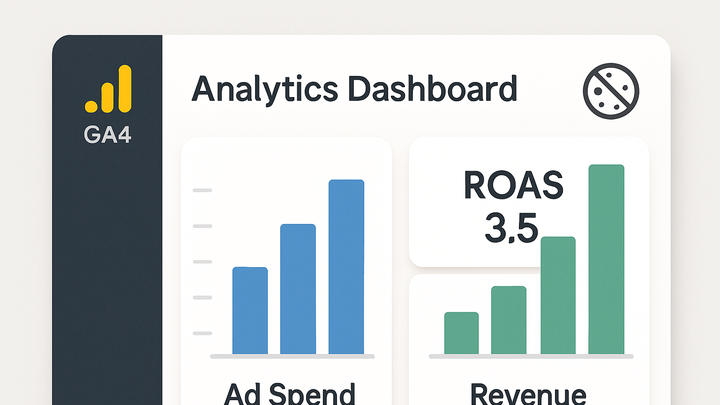Published on 2025-06-22T09:24:24Z
What is ROAS (Return on Ad Spend)? Examples and Calculation
Return on Ad Spend (ROAS) is a key performance metric in digital marketing that measures the revenue earned for every dollar spent on advertising campaigns. By comparing ad-driven revenue against ad costs, ROAS helps marketers evaluate the effectiveness and profitability of their investments across channels like search, social, and display ads. A higher ROAS indicates more efficient use of ad budget, guiding decisions on budget allocation and campaign optimization. Unlike ROI, which considers overall business cost and profit, ROAS focuses specifically on advertising performance. Understanding and tracking ROAS is crucial for data-driven marketers aiming to maximize returns and refine their ad strategies over time. Marketers often segment ROAS by campaign, keyword, or audience to pinpoint high-value tactics and underperformers.
Roas (return on ad spend)
ROAS measures revenue earned per dollar spent on advertising, guiding marketers to optimize ad spend.
Understanding ROAS
ROAS is a metric that quantifies how much revenue is generated for each unit of currency invested in advertising. It provides a clear measure of the effectiveness and efficiency of ad campaigns, allowing marketers to compare performance across platforms and channels.
-
Definition
ROAS stands for Return on Ad Spend and is calculated as total ad-attributed revenue divided by total ad spend.
-
Why it matters
ROAS helps determine which campaigns deliver the best returns, enabling budget reallocation to the most profitable channels.
Calculating ROAS
The ROAS calculation is straightforward, but accuracy depends on correctly attributing revenue to your advertising efforts and capturing all related costs.
-
Roas formula
ROAS = Revenue from Ads / Cost of Ads
-
Revenue from ads
Total sales or value generated directly from ad clicks or impressions.
-
Cost of ads
Includes all expenses related to running ad campaigns, such as bids, creatives, and placement fees.
-
-
Example calculation
If you spend \(200 on ads and generate \)1,000 in attributed revenue, your ROAS is 5 (or 500%).
Implementing ROAS Tracking in GA4
Google Analytics 4 (GA4) offers built-in e-commerce tracking and flexible data-import options to capture revenue and cost data necessary for ROAS reporting.
-
Enable e-commerce reporting
Set up enhanced e-commerce in GA4 to automatically collect purchase and revenue data from your site or app.
-
Import cost data
Use GA4’s Data Import feature or a linked Google Ads account to bring in ad spend metrics for ROAS calculation.
Tracking ROAS with PlainSignal
PlainSignal is a cookie-free analytics solution that can measure ad-driven conversions and revenue without relying on third-party cookies.
-
Tracking code example
Insert the following snippet into your HTML header to enable PlainSignal tracking:
<link rel="preconnect" href="//eu.plainsignal.com/" crossorigin /> <script defer data-do="yourwebsitedomain.com" data-id="0GQV1xmtzQQ" data-api="//eu.plainsignal.com" src="//cdn.plainsignal.com/plainsignal-min.js"></script>
Optimizing Campaigns with ROAS Insights
Once you have reliable ROAS data, use it to inform budget allocation, bid strategies, and creative testing for continuous improvement.
-
Benchmarking roas
Compare ROAS across campaigns, channels, or time periods to identify top performers and areas needing improvement.
-
Adjusting strategies
Reallocate budget toward high-ROAS campaigns, experiment with new ad creatives, and refine audience targeting to boost returns.
